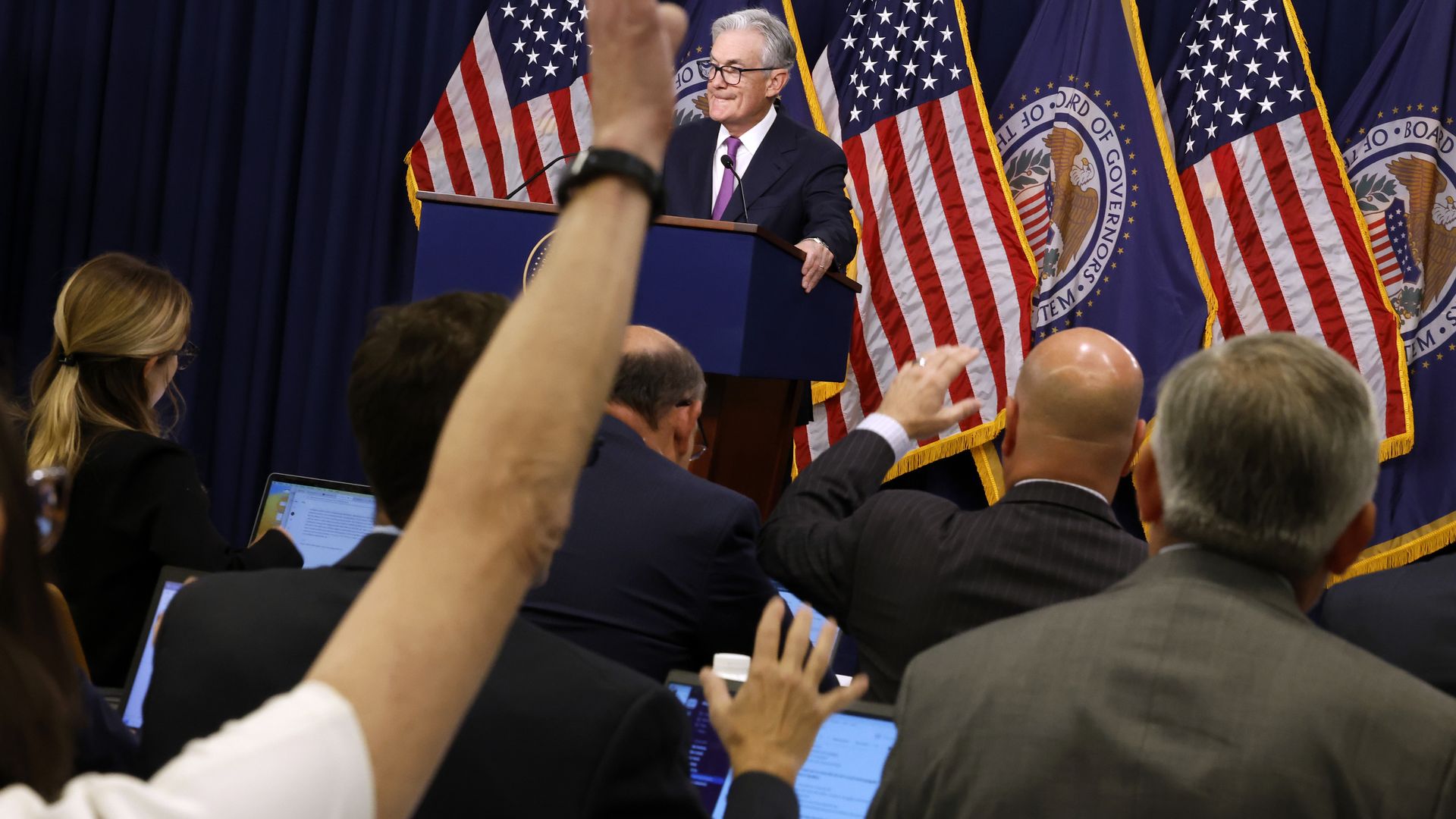Fed officials see way out of inflation woes without major economic pain

- Neil Irwin, author ofAxios Macro

Fed chair Jerome Powell takes questions from the media. Photo: Chip Somodevilla/Getty Images
The most important takeaway from the Federal Reserve yesterday was this: Central bank leaders no longer believe there needs to be major economic pain to keep the economy on the pathway to low inflation.
Why it matters: Interest rates may well be higher for longer than seemed likely before the meeting — and bond markets have priced in exactly that over the last 22 hours. But Fed officials have backed away from their mindset that a significant slump is necessary to vanquish inflation.
- The Fed's communications yesterday were "superficially more hawkish, structurally more dovish," as Skanda Amaranth of Employ America put it.
State of play: The superficially hawkish side came in the form of new projections that show 12 of 19 top Fed officials anticipate raising interest rates one more time this year, and a majority envision keeping rates above 5% throughout 2024.
- That lowered market expectations that the Fed is done raising interest rates and will cut them significantly next year.
Yes, but: The structurally dovish tone came in economic projections. Fed officials now see the same glide path toward their 2% inflation target that they did in June, but see it coinciding with firmer growth and a healthier labor market.
- In June, for example, the median official envisioned 1% growth this year and 1.1% next year, and the jobless rate rising to 4.5% by late next year. That, in the consensus forecast, was the cost of achieving disinflation.
- Now, the median official sees 2.1% growth this year, 1.5% growth next year, and the jobless rate rising only to a mere 4.1% (it's currently 3.8%).
Between the lines: Fed leadership has gained confidence that the disinflation process can occur through channels other than mass job losses and a serious downturn in overall activity.
- Supply chains keep healing, relieving some inflation pressure. Companies have cut back job openings, helping take the air out of the job market without widespread layoffs. More people have entered the labor force.
- Meanwhile, 5.25 percentage points of rate hikes over the last 18 months haven't been enough to tank the economy. That implies the Fed may have more room to maneuver than it once seemed. It can raise rates again and keep them high in 2024 without being overly worried about going too far.
- Conversely, it implies that if the economy does start to falter in a big way in 2024, the Fed will be more willing to toss its projections aside and cut rates in response, even if backward-looking inflation is still elevated.
The bottom line: "This is a Fed that sees an opening for a soft landing and will try not to blow it," said Krishna Guha and Marco Casiraghi of Evercore ISI in a note.